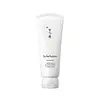What's inside
What's inside
 Key Ingredients
Key Ingredients

 Benefits
Benefits

 Concerns
Concerns

 Ingredients Side-by-side
Ingredients Side-by-side

Water
Skin ConditioningPotassium Cocoyl Glycinate
Glycerin
HumectantAcrylates Copolymer
Propanediol
SolventCoco-Glucoside
CleansingCocamidopropyl Betaine
CleansingGlycyrrhiza Uralensis Root Extract
Skin ConditioningKaolin
AbrasiveOldenlandia Diffusa Extract
Skin ConditioningHydrolyzed Ginseng Saponins
Skin ConditioningMorus Alba Root Extract
BleachingLilium Candidum Bulb Extract
Skin ConditioningHoney
HumectantNelumbo Nucifera Flower Extract
Skin ConditioningPolygonatum Officinale Rhizome/Root Extract
Skin ConditioningPanax Ginseng Root Extract
EmollientPaeonia Albiflora Root Extract
Skin ConditioningRehmannia Glutinosa Root Extract
Skin Conditioning1,2-Hexanediol
Skin ConditioningWater, Potassium Cocoyl Glycinate, Glycerin, Acrylates Copolymer, Propanediol, Coco-Glucoside, Cocamidopropyl Betaine, Glycyrrhiza Uralensis Root Extract, Kaolin, Oldenlandia Diffusa Extract, Hydrolyzed Ginseng Saponins, Morus Alba Root Extract, Lilium Candidum Bulb Extract, Honey, Nelumbo Nucifera Flower Extract, Polygonatum Officinale Rhizome/Root Extract, Panax Ginseng Root Extract, Paeonia Albiflora Root Extract, Rehmannia Glutinosa Root Extract, 1,2-Hexanediol
Water
Skin ConditioningMyristic Acid
CleansingKaolin
AbrasiveLauric Acid
CleansingStearic Acid
CleansingPotassium Hydroxide
BufferingCocamidopropyl Betaine
CleansingHydroxyethylcellulose
Emulsion StabilisingCharcoal Powder
AbrasiveSodium Hyaluronate
HumectantBeta-Glucan
Skin ConditioningVaccinium Myrtillus Fruit/Leaf Extract
AstringentSaccharum Officinarum Extract
MoisturisingAcer Saccharum Extract
Skin ConditioningCitrus Aurantium Dulcis Fruit Extract
MaskingCitrus Medica Limonum Fruit Extract
Skin ConditioningArnica Montana Flower Extract
MaskingArtemisia Absinthium Extract
Skin ConditioningAchillea Millefolium Extract
CleansingGentiana Lutea Root Extract
Skin ConditioningCarica Papaya Fruit Extract
Skin ConditioningGypsophila Paniculata Root Extract
Skin ConditioningHedera Helix Extract
AntimicrobialHydrolyzed Extensin
Skin ConditioningCollagen
MoisturisingDisodium EDTA
Caprylyl Glycol
EmollientEthylhexylglycerin
Skin ConditioningTropolone
Skin ConditioningParfum
MaskingWater, Myristic Acid, Kaolin, Lauric Acid, Stearic Acid, Potassium Hydroxide, Cocamidopropyl Betaine, Hydroxyethylcellulose, Charcoal Powder, Sodium Hyaluronate, Beta-Glucan, Vaccinium Myrtillus Fruit/Leaf Extract, Saccharum Officinarum Extract, Acer Saccharum Extract, Citrus Aurantium Dulcis Fruit Extract, Citrus Medica Limonum Fruit Extract, Arnica Montana Flower Extract, Artemisia Absinthium Extract, Achillea Millefolium Extract, Gentiana Lutea Root Extract, Carica Papaya Fruit Extract, Gypsophila Paniculata Root Extract, Hedera Helix Extract, Hydrolyzed Extensin, Collagen, Disodium EDTA, Caprylyl Glycol, Ethylhexylglycerin, Tropolone, Parfum
Ingredients Explained
These ingredients are found in both products.
Ingredients higher up in an ingredient list are typically present in a larger amount.
Cocamidopropyl Betaine is a fatty acid created by mixing similar compounds in coconut oil and dimethylaminopropylamine, a compound with two amino groups.
This ingredient is a surfactant and cleanser. It helps gather the dirt, pollutants, and other impurities in your skin to be washed away. It also helps thicken a product and make the texture more creamy.
Being created from coconut oil means Cocamidopropyl Betaine is hydrating for the skin.
While Cocamidopropyl Betaine was believed to be an allergen, a study from 2012 disproved this. It found two compounds in unpure Cocamidopropyl Betaine to be the irritants: aminoamide and 3-dimethylaminopropylamine. High-grade and pure Cocamidopropyl Betaine did not induce allergic reactions during this study.
Learn more about Cocamidopropyl BetaineKaolin is a clay. It is used for oil control and to help minimize pores. Like other clays, kaolin has the ability to absorb excess sebum or oil. This can help clean out pores and mattify the skin.
Some types of kaolin may have exfoliating properties. When water is added to kaolin, it becomes a paste with small abrasive particles.
Most kaolin is a white color, but may be pink/orange/red depending on where it comes from.
The name 'kaolin' comes from a Chinese village named 'Gaoling'. Kaolin clay comes from rocks rich in kaolinite. Kaolinite, the mineral, has a silicate layered structure. Kaolinite is formed from chemical weathering of aluminum siilicate minerals.
Besides skincare, kaolin is commonly used to make glossy paper, in ceramics, toothpaste, and as medicine to soothe stomach issues.
Learn more about KaolinWater. It's the most common cosmetic ingredient of all. You'll usually see it at the top of ingredient lists, meaning that it makes up the largest part of the product.
So why is it so popular? Water most often acts as a solvent - this means that it helps dissolve other ingredients into the formulation.
You'll also recognize water as that liquid we all need to stay alive. If you see this, drink a glass of water. Stay hydrated!
Learn more about Water